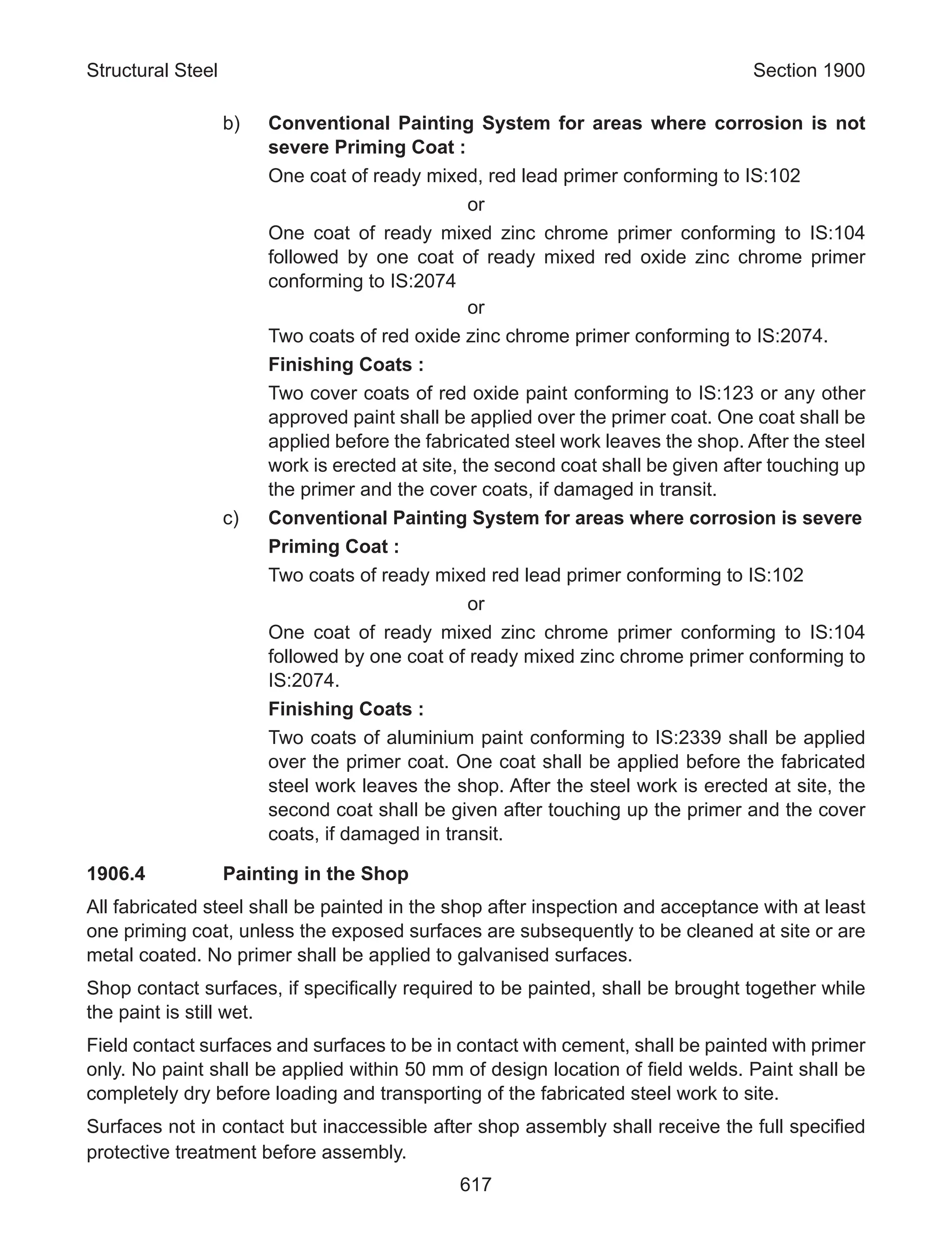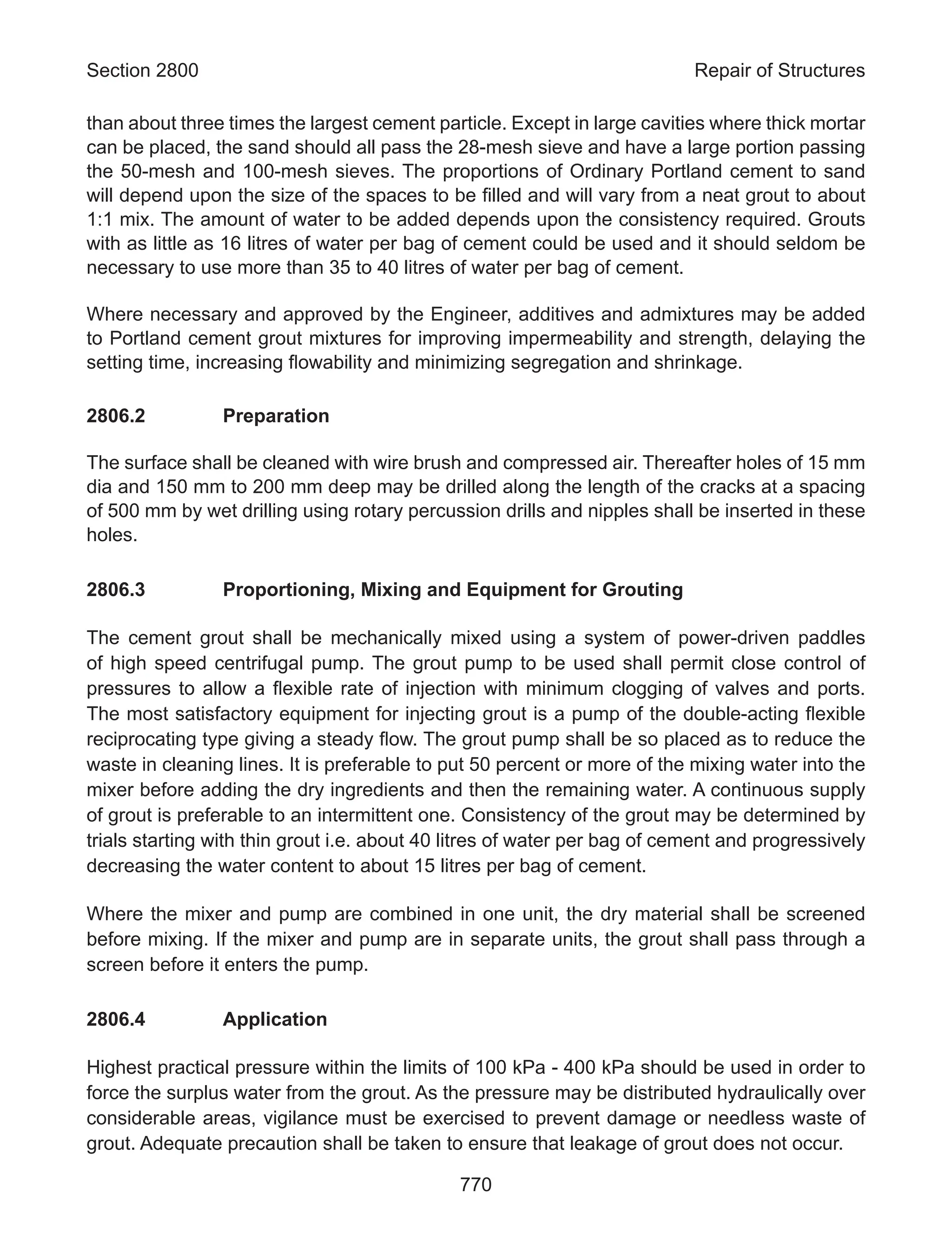This document provides the fifth revision of the specifications for road and bridge works published by the Indian Roads Congress on behalf of the Ministry of Road Transport and Highways in India. Some key changes in this revision include additions covering new materials and construction techniques for roads and bridges. The specifications cover various aspects of road and bridge construction including earthworks, pavements, drainage, concrete structures, and traffic management. It is intended to help achieve technical excellence and quality in major road projects being undertaken in India.









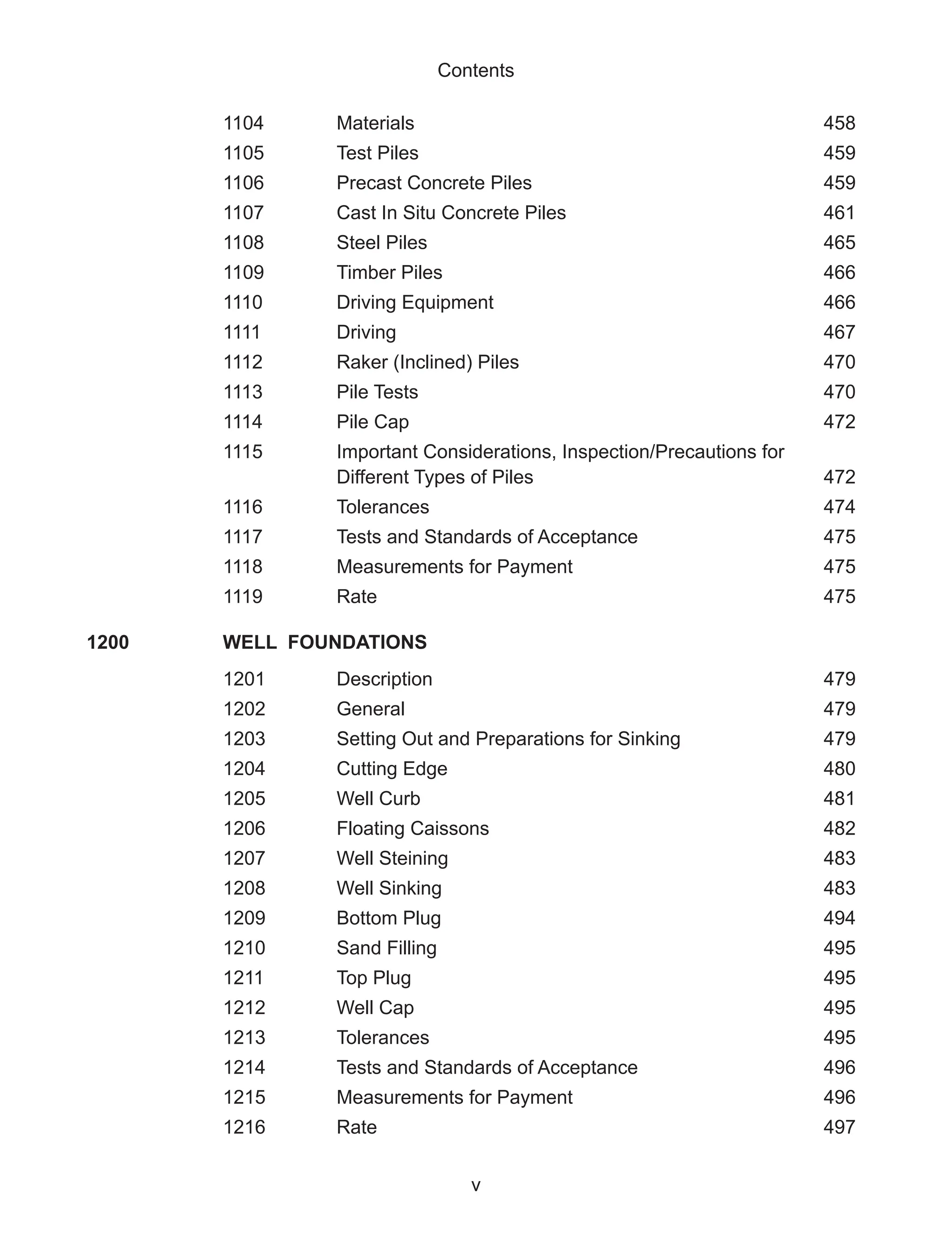






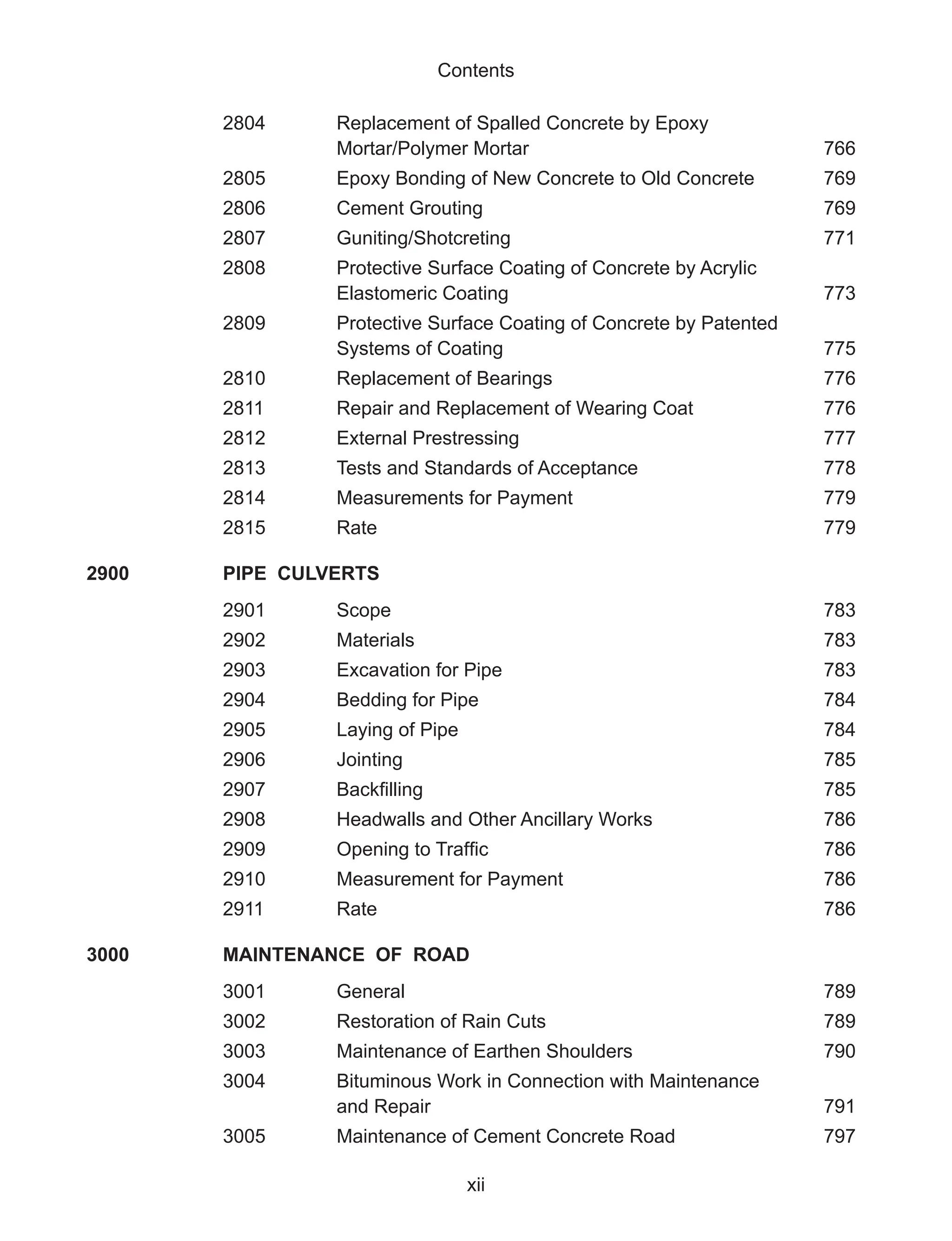

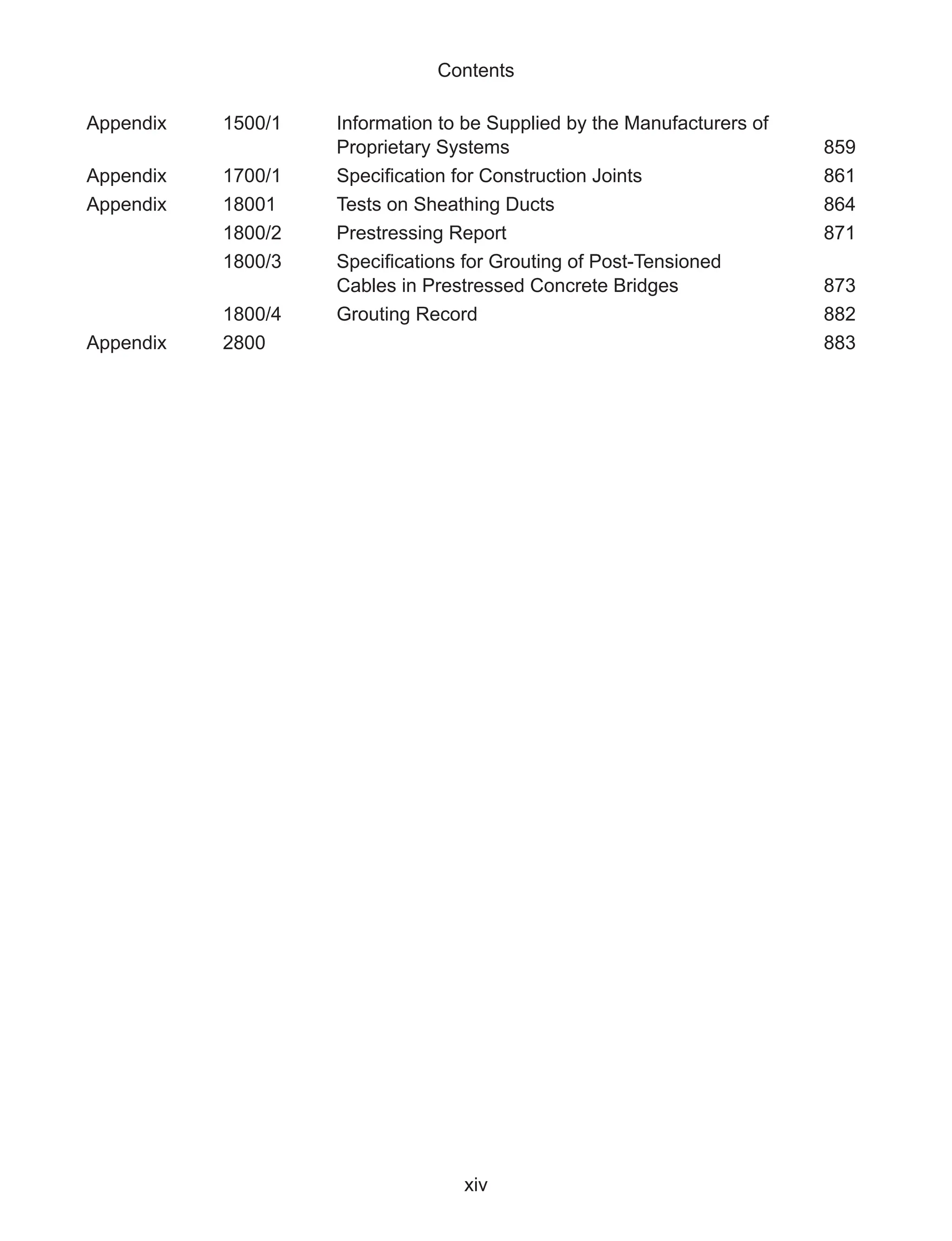
















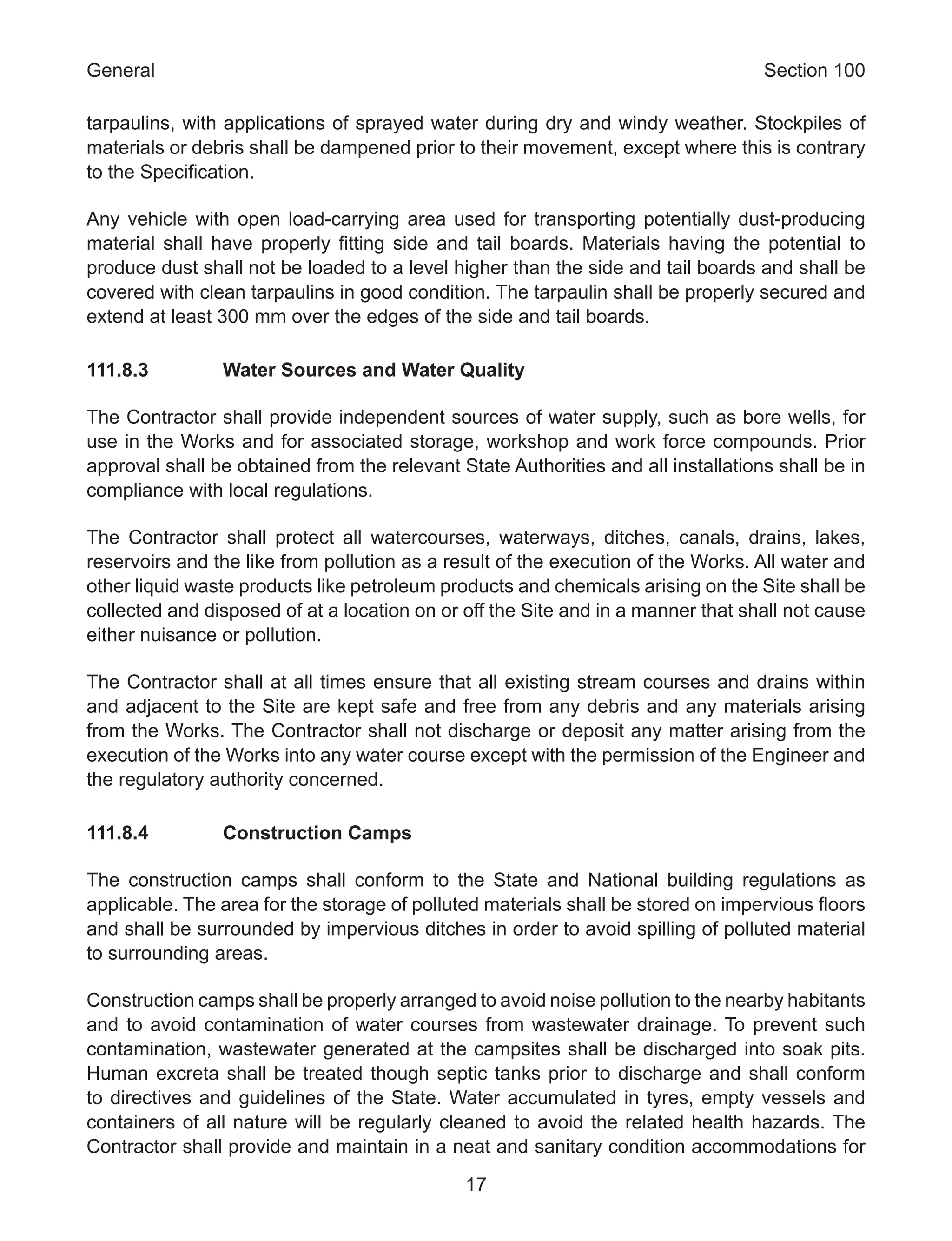

































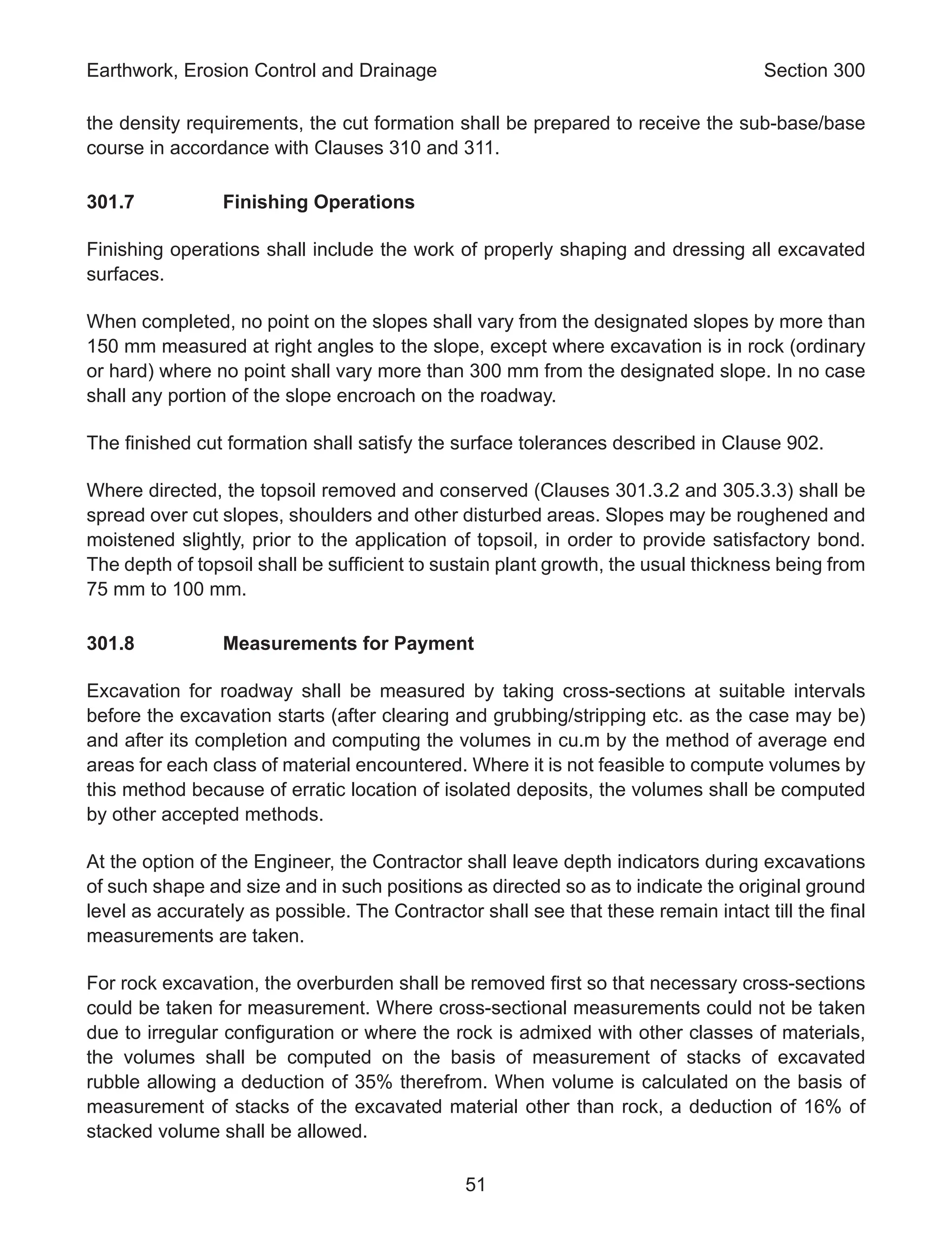








































![Section 300 Earthwork, Erosion Control and Drainage
92
The top layer of rockfill, on which normal earth fill will rest shall be thoroughly blinded with
suitable granular material to seal its surface.
313.4 Measurements for Payment
Measurement shall be made by taking cross-sections at intervals in the original position
before the work starts and after its completion and computing the volume in cu.m by the
method of average end areas.
313.5 Rate
The Contract unit rate shall be paid in full for carrying out all the above operations including
cost of rockfill, broken fragments and blinding material and shall provide full compensation
for all items as per clause 305.8.
314 GROUND IMPROVEMENT FOR WEAK EMBANKMENT FOUNDATION
USING GEOSYNTHETIC DRAINS AND STONE COLUMNS
314.1 Scope
The scope for improving the ground of problematic sub-soil conditions comprises of several
alternatives and combination of more than one of the following alternatives. The improvement
may be chosen based on the sub-soil conditions :
i) Using geosynthetic drains [Prefabricated Vertical Drain (PVD)] with
surcharge involving design and installation of PVD to achieve 90%
consolidation of sub-soil within a prescribed time.
ii) Rammed stone columns.
iii) Stone columns formed by vibroflot technique.
Where specified in the Contract the scope of the work shall also cover the design of the
ground improvement works by the Contractor.
314.2 Prefabricated Vertical Drain (PVD) with Surcharge
The design and construction of this drain shall generally comply with the requirements of
IS:15284 (Part 2) and the requirements given below. In the case of conflict between the
requirements of IS:15284 and this Specification, the requirements of this Specification shall
prevail.](https://image.slidesharecdn.com/mort-231124044025-6469d872/75/mort-250-2013-pdf-111-2048.jpg)



![Section 300 Earthwork, Erosion Control and Drainage
96
the measurement of changes in pore pressure. The specifications
for the Casagrande piezometer shall be as follows.
The piezometer shall be 38 mm in dia and 300 mm in length;
The air entry value shall be of the order of 0.3 kg/cm2
.
The standpipe shall be more than 16 mm in diameter;
The piezometer shall be installed in 150 mm borehole, at specified
depths. Sand cover around the piezometer tip and bentonite seal
above shall be provided; and
Suitable electronic sensor shall be used to record the water level
Piezometers including dummy piezometers shall be installed at
locations specified by the Engineer.
b) Rate and Magnitude of Vertical Settlements of the Subsoil
under the Surcharge Load : Settlements shall be measured by
installing platform type settlement gauges, which consist of the
following :
Wooden base plate 1000 mm square and 50 mm thick;
GI pipe of 25 mm dia fitted to the base plate with a suitable sleeve
arrangement and nuts and bolts;
Outer loose fitting sleeve, to prevent soil form coming into contact
with the inner pipe;
The pipe and the sleeve consist of 1.5 m long sections, which can
be screwed on at the top, so that as the surcharge is built up, the
top of the pipe is well clear of the fill;
Settlement gauges shall be installed at the ground level, before the
startingofthefillconstruction.Theseshallbeinstalledlocationsspecified
by the Engineer. The readings of settlement gauges also form the basis
to estimate the quantity of surcharge forming part of permanent work.
The number of settlement gauges shall be decided by the Engineer
keeping in view this aspect.
c) MeasurementofShearStrength:Theshearstrengthparameters
of the subsoil [unconfined compressive strength (UCS)] shall be
measured at locations specified by the Engineer at the end of each
stage of surcharge loading in order to compare the actual details
with the design assumptions. For the recovery of undisturbed
samples from the subsoil for determining UCS, before start
of construction of surcharge, 100 mm dia casing pipe shall be
installed into the ground to 3 m depth, preferably by driving; the
top of the casing pipe shall have provision for adding extensions](https://image.slidesharecdn.com/mort-231124044025-6469d872/75/mort-250-2013-pdf-115-2048.jpg)














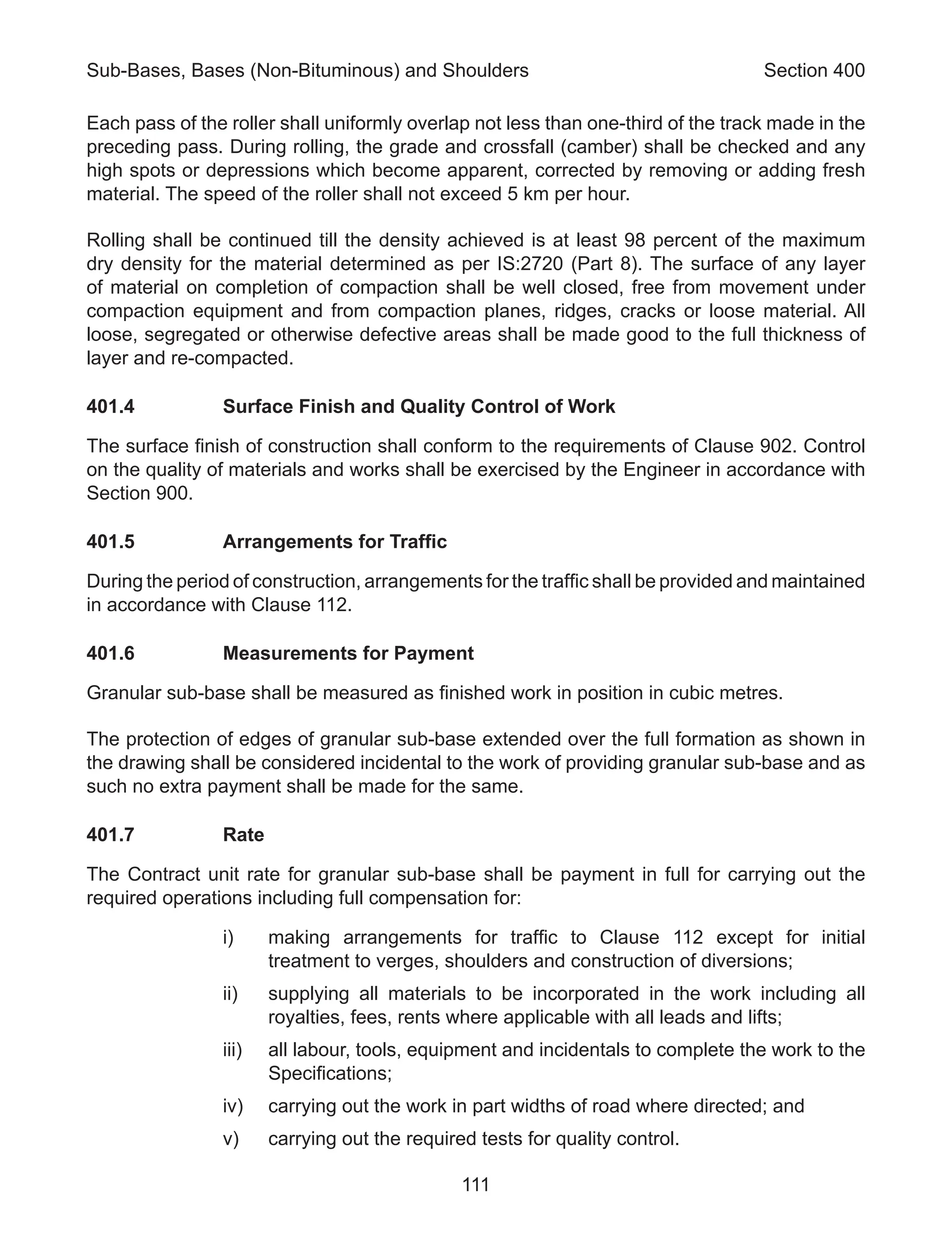


















































































![Section 500 Bases and Surface Courses (Bituminous)
194
508.6 Arrangements for Traffic
During the period of construction, arrangements for traffic shall be in accordance with the
provisions of Clause 112.
508.7 Measurement for Payment
Close-graded premix surfacing, Type A or B shall be measured as finished work, for the area
specified to be covered, in square metres at a specified thickness. The area will be the net
area covered.
508.8 Rate
The contract unit rate for close-graded premix surfacing, Type A or B shall be payment in full
for carrying out the required operations including full compensation for all components listed
in Clause 501.8.8.2.
509 SURFACE DRESSING
509.1 Scope
This work shall consist of the application of one coat or two coats of surface dressing, each
coat consisting of a layer of bituminous binder sprayed on a previously prepared, base,
followed by a cover of stone chips rolled in to form a wearing course to the requirements of
these Specifications.
509.2 Materials
509.2.1 Binder
The binder shall either be bitumen conforming to IS:73 or rapid setting cationic bitumen
emulsion (RS-2) conforming to IS:8887. Grade of bitumen shall depend upon the climatic
condition. For selection of grade of bitumen guidance may be taken from Table 500-1. The
type of binder to be used shall be stated in the Contract, or as directed by the Engineer.
509.2.2 Aggregates
The stone chips (cover aggregate) shall conform to the requirements of Clause 505.2.2.,
except that their water absorption shall be restricted to a maximum of 1 percent and they
shall have a Polished Stone Value of minimum 60. [in BS:812 (Part-114)], of not less than
60. The size of the aggregate shall depend upon the type of surface on which it is laid and
the traffic intensity. The chips shall be single sized, clean, hard, durable, of cubical shape;
and free from dust and soft or friable matter, organic or other deleterious matter and conform
to one of the gradings given in Table 500-21. The size of the aggregate shall depend upon
the type of surface on which it is laid and the traffic intensity. Table 500-20 may be used as
guidance.](https://image.slidesharecdn.com/mort-231124044025-6469d872/75/mort-250-2013-pdf-213-2048.jpg)









































































































































































































































![Section 900 Quality Control for Road Works
428
903.2 Tests on Earthwork for Embankment, Subgrade Construction
and Cut Formation
903.2.1 Borrow Material
Grid the borrow area at 25 m c/c (or closer, if the variability is high) to full depth of proposed
working. These pits should be logged and plotted for proper identification of suitable sources
of material. The following tests on representative samples shall be carried out for every 3000
cum for each source:
a) Sand Content [IS:2720 (Part-4)]: 2 tests per 3000 cu.m of soil.
b) Plasticity Test [IS:2720 (Part-5)]: Each type to be tested, 2 tests.
c) Density Test [IS:2720 (Part-8)]: Each soil type to be tested, 2 tests.
d) Deleterious Content Test [IS:2720 (Part-27)]: As and when required by
the Engineer.
e) Moisture Content Test [IS:2720 (Part-2)]: Two tests.
f) CBR Test on materials to be incorporated in the subgrade on soaked/
unsoaked samples [IS:2720 (Part-16)] : One CBR test (average of three
specimens) or closer as and when required by the Engineer.
903.2.2 Compaction Control
Control shall be exercised on each layer by taking at least one set of ten measurements of
density for each 3000 sq.m of compacted area, or closer as required to yield the minimum
number tests results for evaluating a day’s work on statistical basis. The determination of
density shall be in accordance with IS: 2720 (Part-28). Test locations shall be chosen only
through random sampling techniques. If non-destructive tests are carried out, the number of
tests shall be doubled. If considerable variations are observed between individual density
results, the minimum number of tests in one set of measurement shall be increased. The
acceptance criteria shall be subject to the condition that the mean density is not less than the
specified density plus:
1 65
1 65
0 5
.
.
( . ) .
−
No of samples
times the standard deviation
However, for earthwork in shoulders (earthen) and in the subgrade, at least one set of ten
density measurements shall be taken for every 2000 sq.m for the compacted area In other
respects, the control shall be similar to that described earlier.
903.2.3 Cut Formation
Tests for the density requirements of cut formation shall be carried out in accordance with
Clause 903.2.2.](https://image.slidesharecdn.com/mort-231124044025-6469d872/75/mort-250-2013-pdf-447-2048.jpg)




























































































































































































